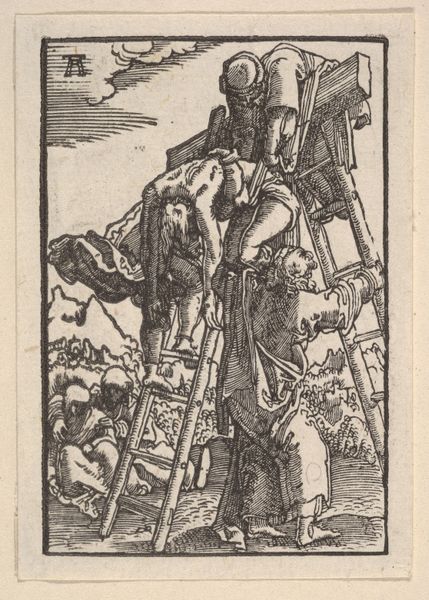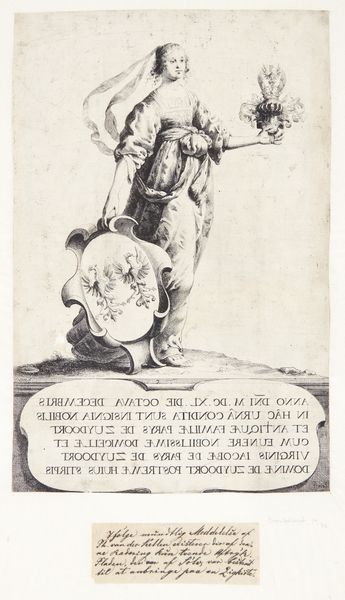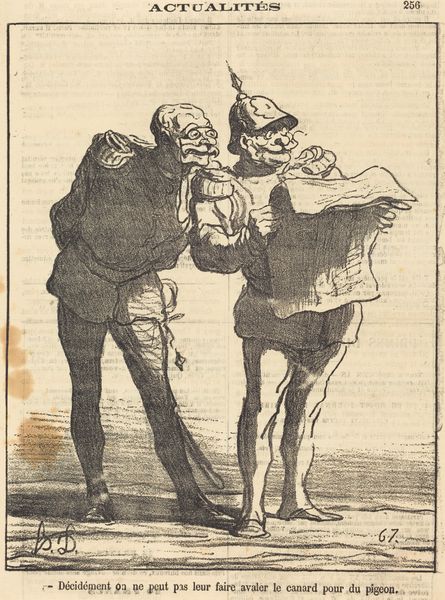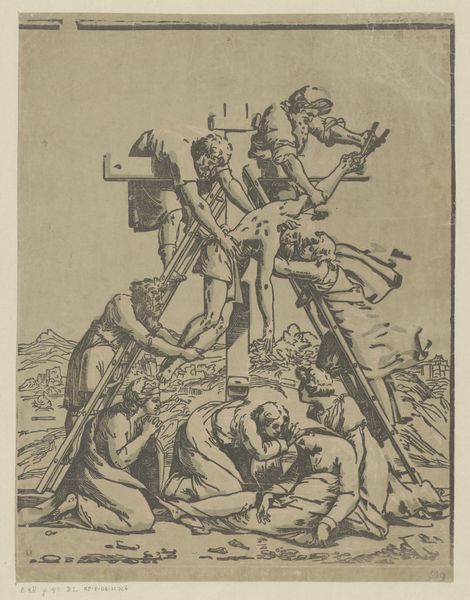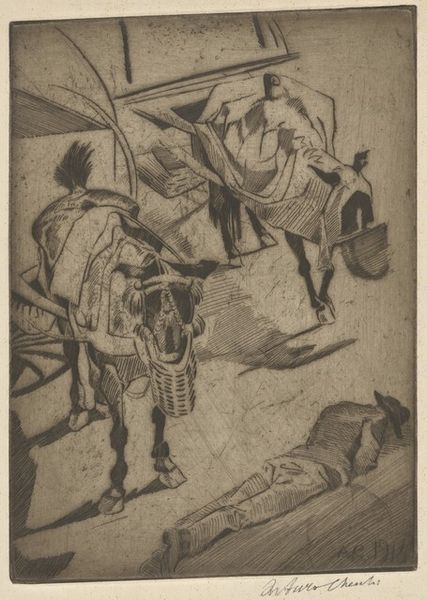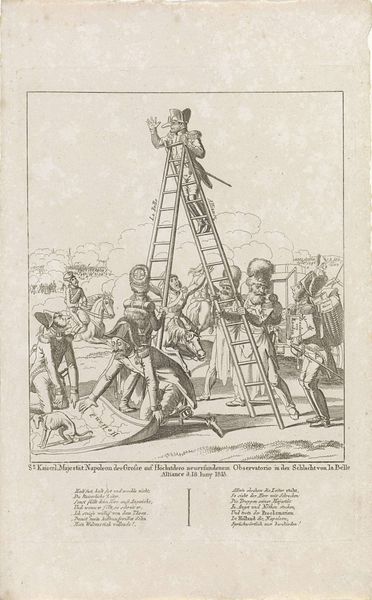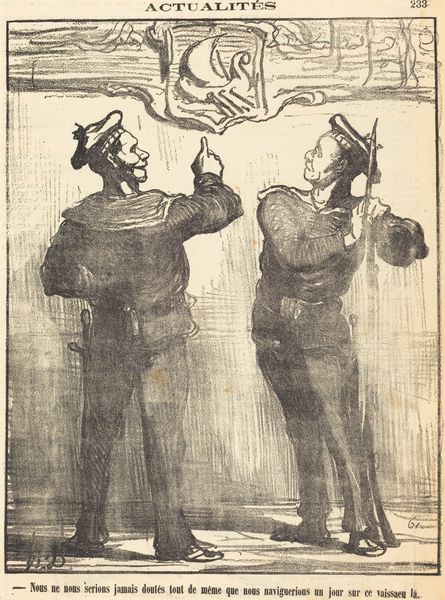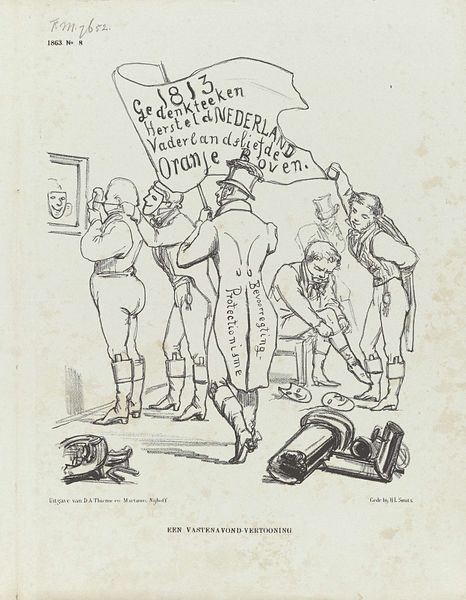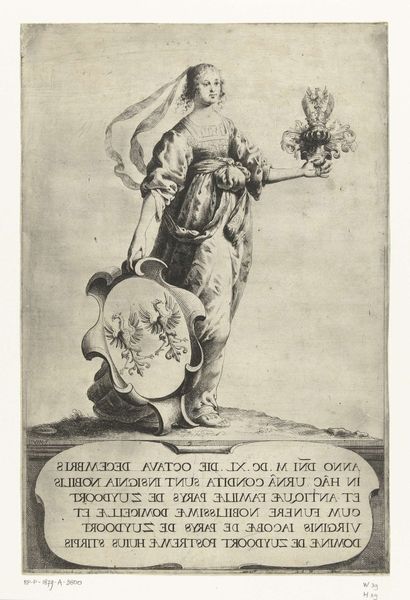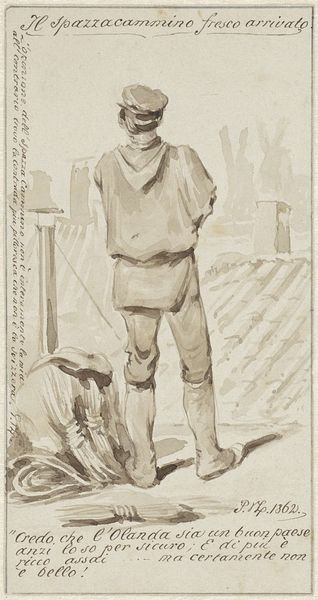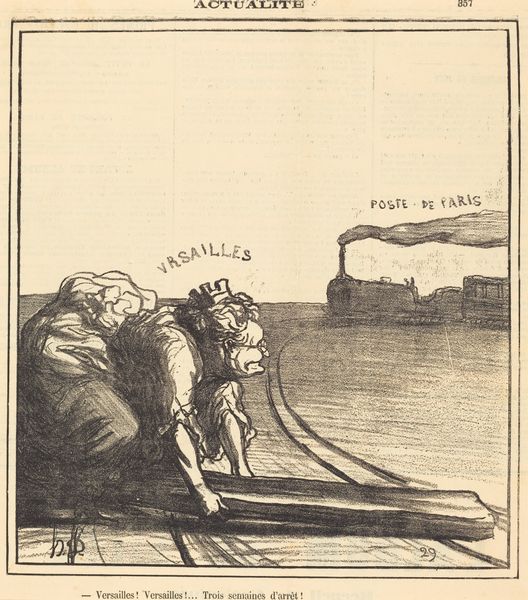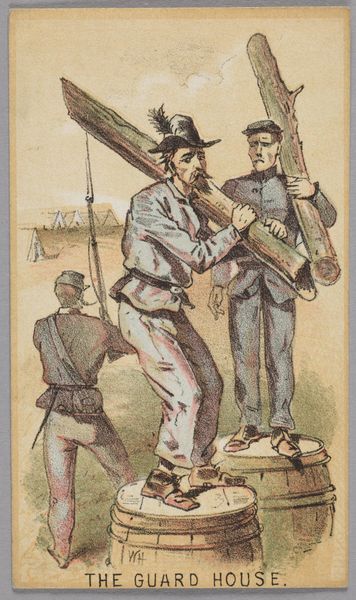
A man climbs a ladder while a woman throws water on him from above 1575 - 1599
0:00
0:00
drawing, print, etching
#
drawing
#
narrative-art
# print
#
etching
#
mannerism
#
figuration
#
italian-renaissance
Dimensions: Plate: 10 5/8 × 7 1/16 in. (27 × 18 cm) Sheet: 10 13/16 × 7 3/16 in. (27.4 × 18.3 cm)
Copyright: Public Domain
Curator: This print, titled "A man climbs a ladder while a woman throws water on him from above," was created by Giovanni Ambrogio Brambilla between 1575 and 1599. It's an etching rendered in that detailed, linear style we associate with Mannerism. Editor: My first impression is pure chaotic humor! There's so much visual storytelling packed into this one scene—a sense of imminent slapstick. The characters' exaggerated expressions only amplify the playful mood, don’t you think? Curator: Absolutely, and placing this within the context of 16th-century Italian society, one might see it as a commentary on gender dynamics and class tensions. The woman, elevated both physically and perhaps socially, literally pours scorn upon the man. His accomplice lurks, reinforcing the social disruption. Editor: The water is such a primal symbol – purification, baptism, but also cleansing as in, washing away wrongdoing, in this case failed trespass? Is the falling water meant to ‘baptize’ him? And how does it contrast with the expressions of all involved? There are clues here about moral rectitude. Curator: Intriguing idea! Certainly, water features heavily in cultural narratives across history as both destructive and restorative. Here, its application seems clearly punitive, linked directly to the woman's position of power within this tableau. It serves, symbolically, to cleanse him from his presumed transgression. It calls into question the narrative of masculinity prevalent at the time, disrupting any expectation of male dominance. Editor: Look at the text scrawled across the image. Does the act embody the symbolism of betrayal: "Amigo, Amigo" as the water drenches him, "Wait, wait, you thieving scoundrel!" it yells? In his quest, who’s betrayed him, and for what gains or purposes? The bucket symbolizes both danger and power as weapons, while that ladder is an invitation and a road towards possible upward advancement Curator: Yes! And thinking about the shield lying discarded on the ground -- could it represent discarded privilege, perhaps? That combined with the accomplice ready with a weapon creates a potent image of social conflict playing out. This seemingly humorous scene becomes quite a biting critique, using the subversion of established order to examine power dynamics. Editor: Such clever use of symbolism makes one contemplate enduring class struggles. I leave with the understanding that even humour carries layered meanings across time. Curator: Indeed! Examining art through an intersectional lens gives us a wider and more meaningful scope of history, politics, identity, and, of course, humanity itself.
Comments
No comments
Be the first to comment and join the conversation on the ultimate creative platform.

